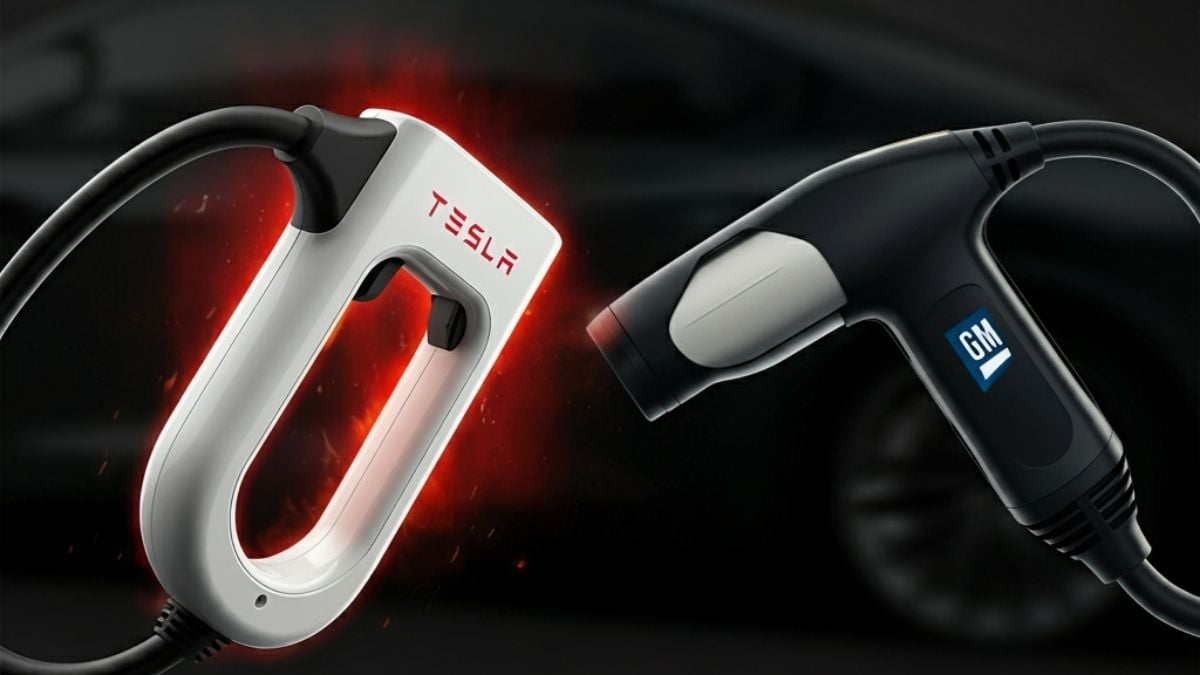With GM now beginning their conversion to the NACS Tesla plug standard there are things you need to know, one of them being, it may be unsafe to use a Tesla supercharger with a non-Tesla car.
GM Vehicles Get Access To Tesla Superchargers – What You’ll Need Before Using A Tesla Supercharger
Yet another company, GM, has begun to transition to Tesla NACS (North American Charging Standard) land, like Ford before them. You can buy adapters and switch from the J1772 and CCS1 standards to the superior Tesla offering. Depending on the manufacturer and design, the adapters can be problematic because the locks between the charging plug may not release, causing you to lose an adapter.
In Europe, Tesla altered many of its chargers to support both CCS2 (the European standard) and NACS, but in the US, everyone also needs a plug adapter. In the past, efforts were made to supply adapters to charging stations, but often, they were stolen.
What You’ll Need
It would be nice if you only needed a plug adapter, but the software in the vehicle must also be updated so the car will talk to the charger. In use, however, the Tesla chargers tend to work more efficiently and better than their CCS1/2 counterparts, which require you to interface with the charger directly instead of through your car. To non-Tesla drivers, this new experience is still not as good as Tesla native, where the car and charger were designed to work together. Still, I expect, throughout 2 to 3 years, the non-Tesla charging experience will increasingly emulate the experience Tesla drivers now get.
Adapters have come down in price, typically around $200 for a Level 3 fast charger adapter (GM charges $225 if you buy from them), to $140 for a Level 2 adapter if you have an existing Level 2 charger. The good news is that the adapter can go from a CCS2 to a NACS socket (if you want to keep using your existing Level 2 charger or the older CCS2 charger, that adapter costs only around $100). Once the NACS socket is standard and the chargers are upgraded, by 2030, you won’t need these adapters anymore.
The Bigger Problem
While you’ll eventually have both the right adopter and the right software upgrade, there is another more complex problem to correct. Tesla puts their socket in the car's rear on the left side. Most everyone else put their socket on the left or right-side front of the car just in front of the front wheel. The Tesla charger cable lengths are set for their socket placement and designed so that you can go back into the charging parking space. These cables are often not long enough to reach the socket on a non-Tesla car, suggesting you might also have to carry a charging cable extension cord or park perpendicular to the charger to charge, blocking charger access to the chargers next to the one you are using.
This is going to be a problem for a while as the Tesla charging network is still the most robust in terms of coverage, but if non-Teslas are taking up multiple chargers, then Tesla drivers are likely to become upset and rightfully feel put out when they can’t charge their own cars. When drivers get upset, some act out and can damage your charging car or even attack you (or shoot you, as was the case in Denver).
Wrapping Up:
We are still in the emerging phase of electric vehicles. The lack of a common charging plug standard emulates the problems we had with multiple plug types for cellphones, where everyone but Apple initially went to USB-C, and then Apple reluctantly followed. This move to NACS will be similar in that there will be a certain amount of pain until the software and sockets for all cars are similar enough to overcome these initial problems and exposures.
What makes this move different is that with cell phones, Apple capitulated and ended up with the same plug as the more prevalent Google phones. However, Tesla, unlike Apple, won the standards war, and thus, everyone else has to change (this makes sense since Tesla sells more EVS by far than any other vendor).
But, until these problems are fixed, you may want to hold off using a Tesla charger even if your car will work with it and you have an adapter because of the risk of Tesla drivers acting out when they see your non-Tesla car keeping them from what they think of as their chargers.
Rob Enderle is a technology analyst at Torque News who covers automotive technology and battery development. You can learn more about Rob on Wikipedia and follow his articles on Forbes, X, and LinkedIn.
$225 for adapter when all…
$225 for adapter when all the other dealers are giving them to car buyers for free. Looks like when I trade my Botl in I won't be buying GM!!!!





